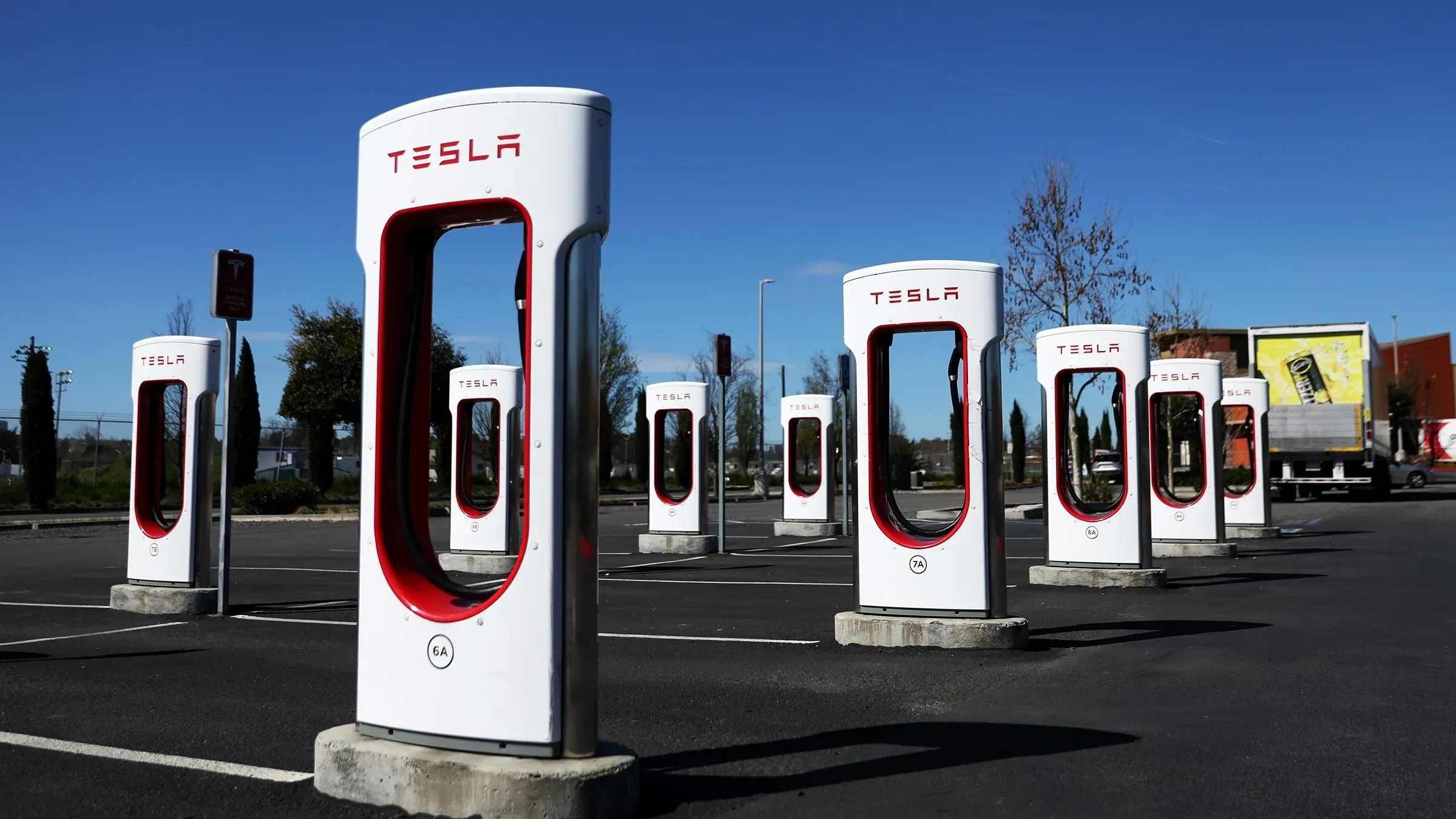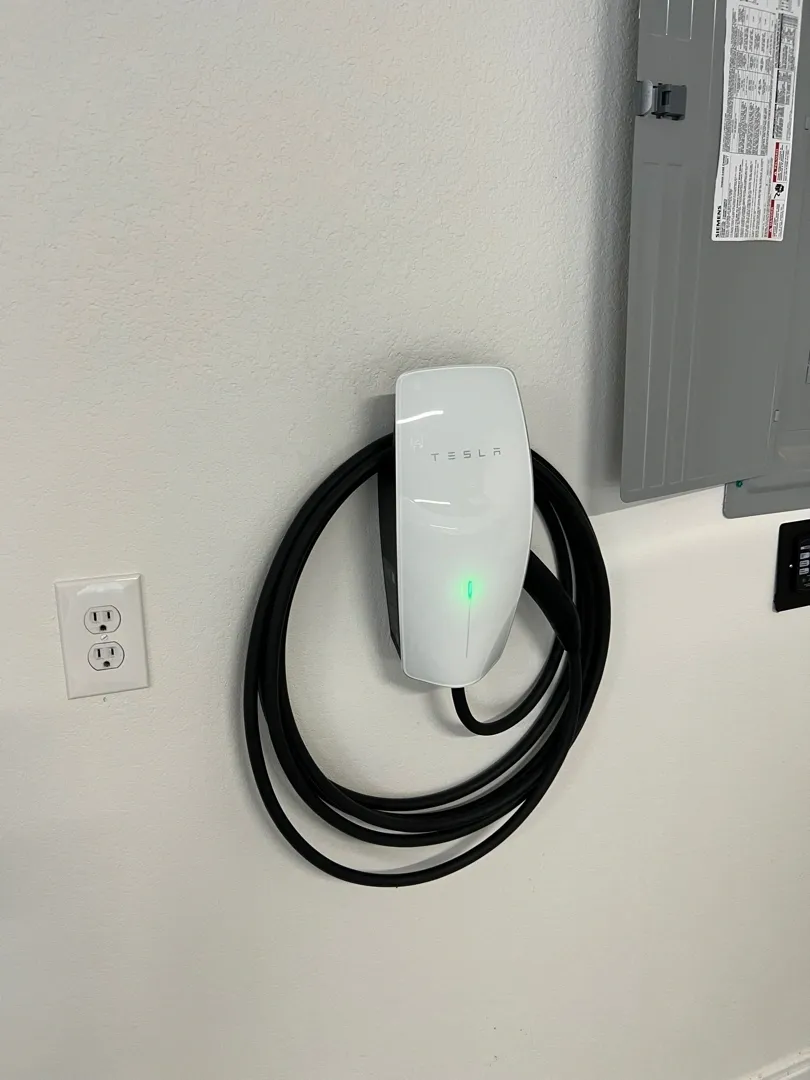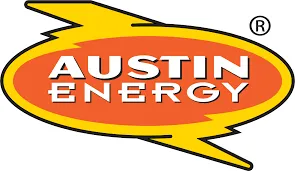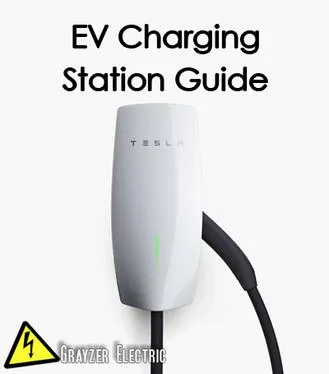Common Questions with EV Charging
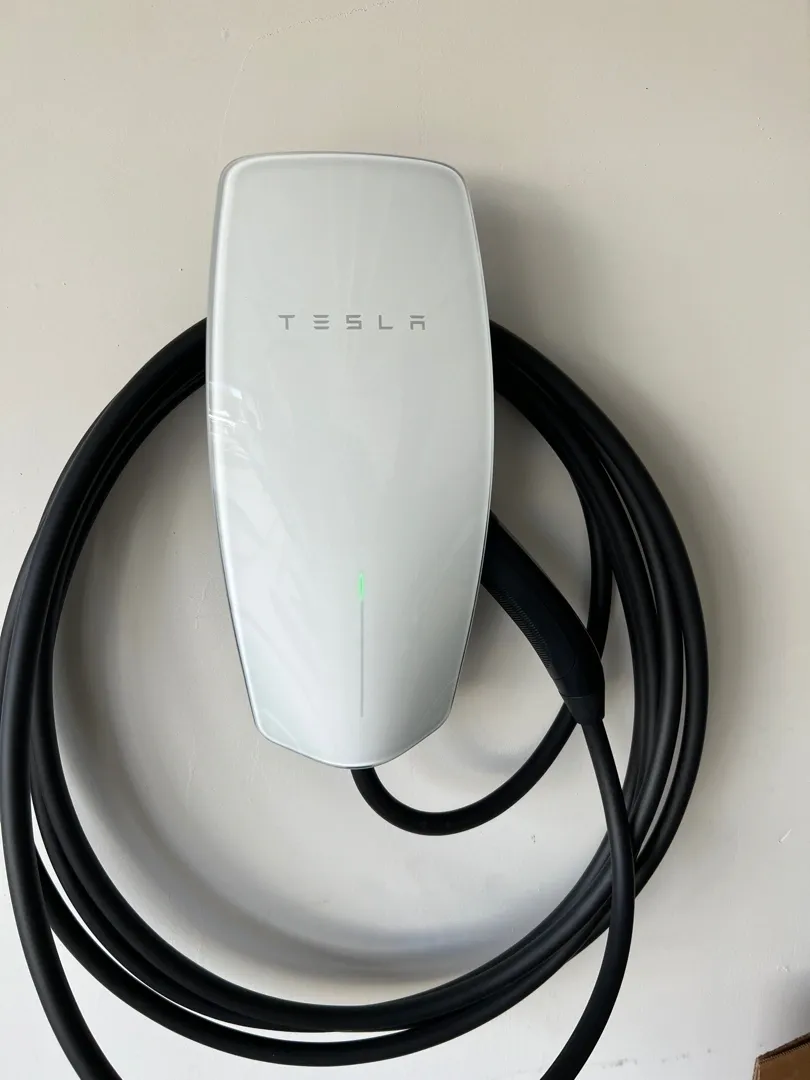
Is it called a car charger or charging station?
The technical term for the equipment we are installing is Electric Vehicle Supply Equipment (EVSE). Almost no one uses that term or has ever heard of it. Some people call it a car charger, which is technically incorrect. The unit that we install on the wall is a charging station. It is basically an extension cord to bring AC power to the car. The actual charger is inside the car. We use both terms to appeal to all customers. You can call it either one and we’ll know what you are talking about.
There are public charging stations available in most areas. While not as convenient as plugging in at your own home, it will charge faster than what you are having installed in your garage. Tesla has a large supercharger network that they will be opening up to all vehicles, not just Teslas. You shouldn’t need to charge every day just like you didn’t put gas in your gasoline vehicle every day before. You will likely only have to use a public charging station once or twice (if at all) should you need to charge before we can get your charging station installed. Our lead times are relatively short for installations. Planning ahead to get a charging station installed before you receive your car is the best way to avoid any headaches.
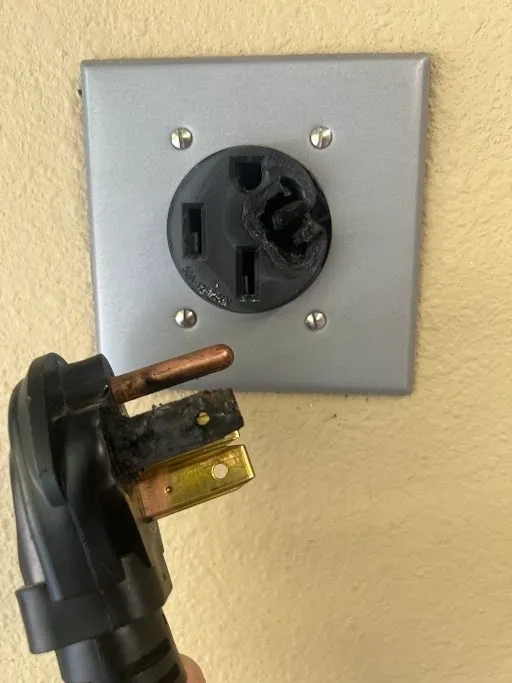
The 2023 National Electric Code (NEC) requires all outlets 50 amps and less installed in a garage or outside to be Class A GFCI protected. Since a NEMA 14-50 receptacle would be installed with a 50 amp breaker, we would have to install an expensive GFCI breaker. When mixed with car chargers, GFCI breakers have a tendency to nuisance trip. You would have to reset the breaker to be able to start charging again. This GFCI breaker would not be necessary if we hardwired a 60 amp circuit directly into a charging station with no receptacle. We have seen issues like the picture of the melted receptacle with 14-50 installations. The receptacle creates another connection point for a higher amperage circuit that can be a weak point. Our recommendation is to hardwire your charging station on a 60 amp circuit as it costs less and will not come with the issues a NEMA receptacle can have.
Dryers, AC units, ovens, pool motors, etc. all run on 240-volt circuits. This is the voltage we need for a car charging station installation, but the code requires us to install charging stations on their own dedicated circuits. If we were to tap into an existing 240-volt circuit and add another line for your car charger, this would give you the opportunity to overload that circuit. This would be illegal and any damages that were caused by overloads would be our responsibility. All Level 2 charging stations have to be on their own dedicated circuits.

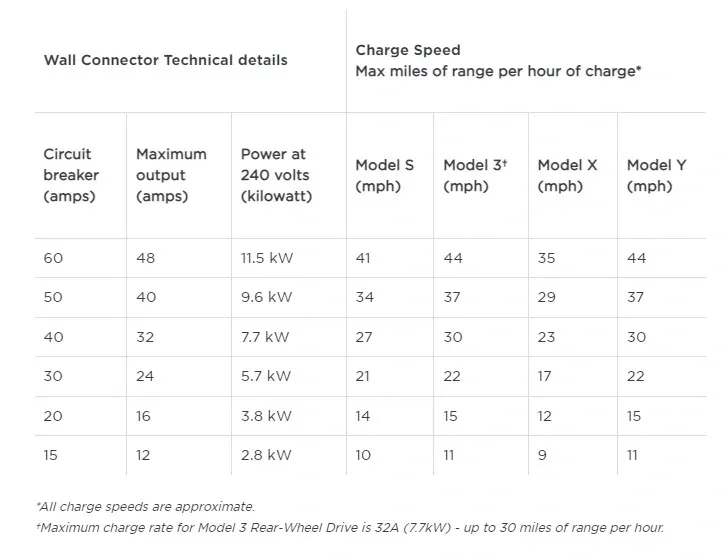
The answer will vary based on how many miles you’ve driven that day and what amperage you are charging at. The average person drives around 50 miles a day. For a Tesla, those 50 miles would be regained in a little over an hour of charging on a 60 amp circuit. A 60 amp circuit will charge the car at 48 amps which is 80% of the capacity of the 60 amp circuit.
The answer will vary based on factors like how far the circuit needs to be ran, how much amperage you have available at your house, what size circuit we are running for the charging station, which charging station you are using, etc. Pricing can range from $500-$3000, but if you need a service upgrade to support the charging station, that would be more. The best way to get accurate pricing for your project is to fill out our quote form. This is a simple process that will take you about 5-10 minutes to fill out and that will give us the information we need to get you a quote for your project.
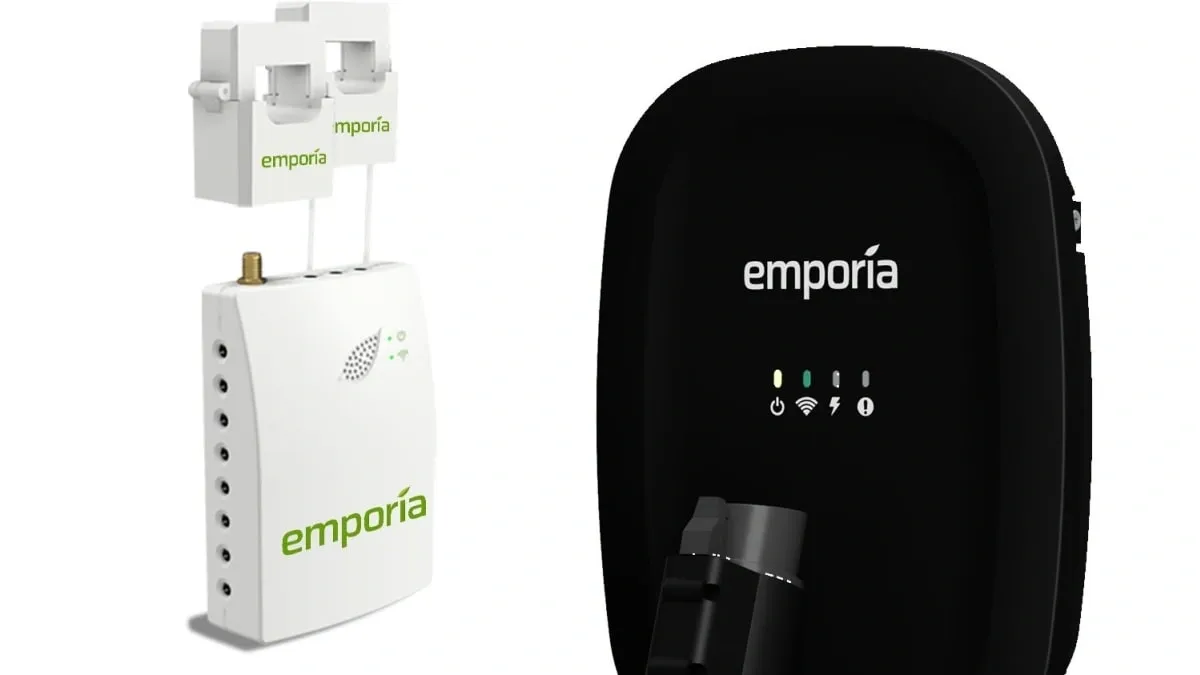
A load management device is an accessory to a charging station. Some brands will refer to it as a current limiter. It will read how much power the rest of the breaker box is using while you are charging and dynamically adjust the output of the charging station so it doesn’t overload your breaker box. This can be beneficial in avoiding costly service upgrades or potentially longer runs. Not all charging stations have load management options, though. This accessory will mount inside the breaker box and has amp probes that attach to the main feeders of the breaker box. Some devices connect to the charging station wirelessly while others require extra wiring. Once connected, they can communicate and ensure that when you are charging, you will not overload the breaker box.
Typically, the closer to the charge port on the car, the better. This means the cord from the charging station to the car will travel the shortest distance and be less of a tripping hazard. We’ve also seen charging stations pulled off the wall when the cord ran behind a second car and that car backed over the cord. It’s also most convenient when it’s right next to the charge port. On a Tesla, the charge port is on the back of the driver’s side of the car. Those charging stations are typically installed at the front left of the garage. This will put the charge port right next to the charging station when the car is pulled into the left parking spot in the garage. We can put the charging station wherever you want in the garage. It might make sense to put the charging station in a location where it could plug into multiple parking spots without having to run behind a vehicle. Most cords are 23-25′ long so you’ll have options. The two most important factors are: Where is the charge port on the car and how are you going to park the car in the garage?
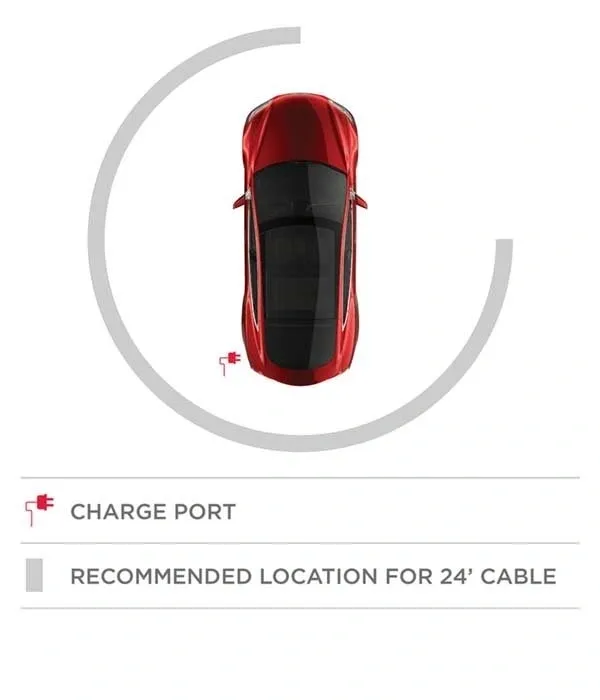
Once you have approved a formal quote and you have a charging station in your possession, we’ll add you to our schedule. We are getting to most installs within a week or two at most.
If your job is a breaker box replacement that requires an outage with the power company, we will have to coordinate that job with the power company. Jobs that have to be coordinated with Austin Energy can be anywhere from 1-6 months out as Austin Energy is fairly backed up.
If Austin Energy is your electric provider, they offer a rebate for 50% back up to $900 or $1200 depending on the charging station you select. The amount subject to the rebate includes the cost of the installation and the cost of the charging station.
The IRS has an Alternative Fuel Vehicle Refueling Property Credit that you would need to consult with a tax professional on to see if you would qualify for. This would be filed with your taxes next year and is Form 8911 with the IRS.
If you are unsure which charging station to buy, we have created a guide that covers the most common charging stations available. There are also links to purchase each charging station. All home EV charging stations do the same thing in that they are an extension cord to the car. The actual charger is in the car. There are only two cord ends available to plug into the car and adapters exists to go between the two options. Any charging station can charge any car as long as it can be plugged into the car. Hardwired charging stations are better and typically less expensive to install than charging stations that require a NEMA receptacle like a 14-50 or 6-50.
Emporia Charging Station Installed from the Inside Breaker Box to the Outside of the Garage
This installation features the Emporia charging station, complete with their load management system installed inside the breaker box. The garage sub-panel is powered by a 60 amp breaker from the main breaker box outside, and the charging station is set up on a 60 amp breaker as well. Thanks to the load management system, the charging station monitors the power usage of the entire breaker box while charging and automatically adjusts its output to prevent overloading the 60 amp feed.
